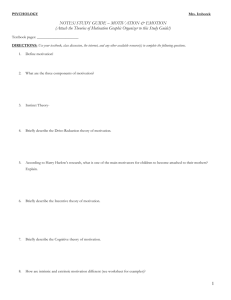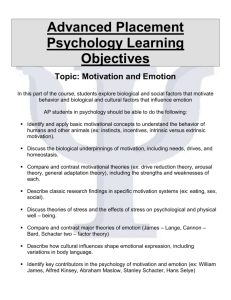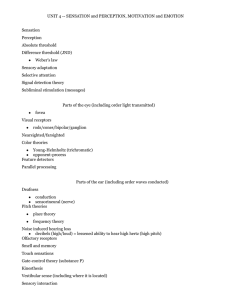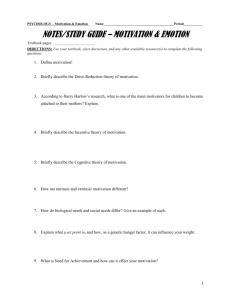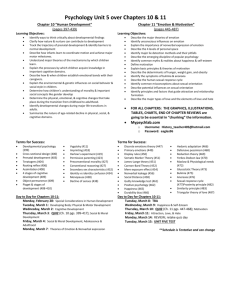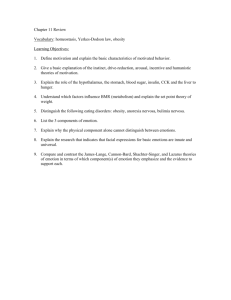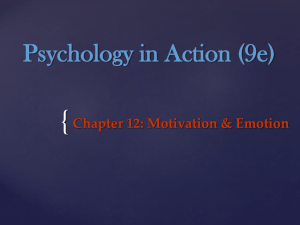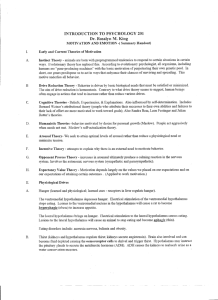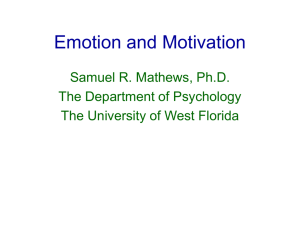Motivation & Emotion: Chapter Learning Objectives
advertisement
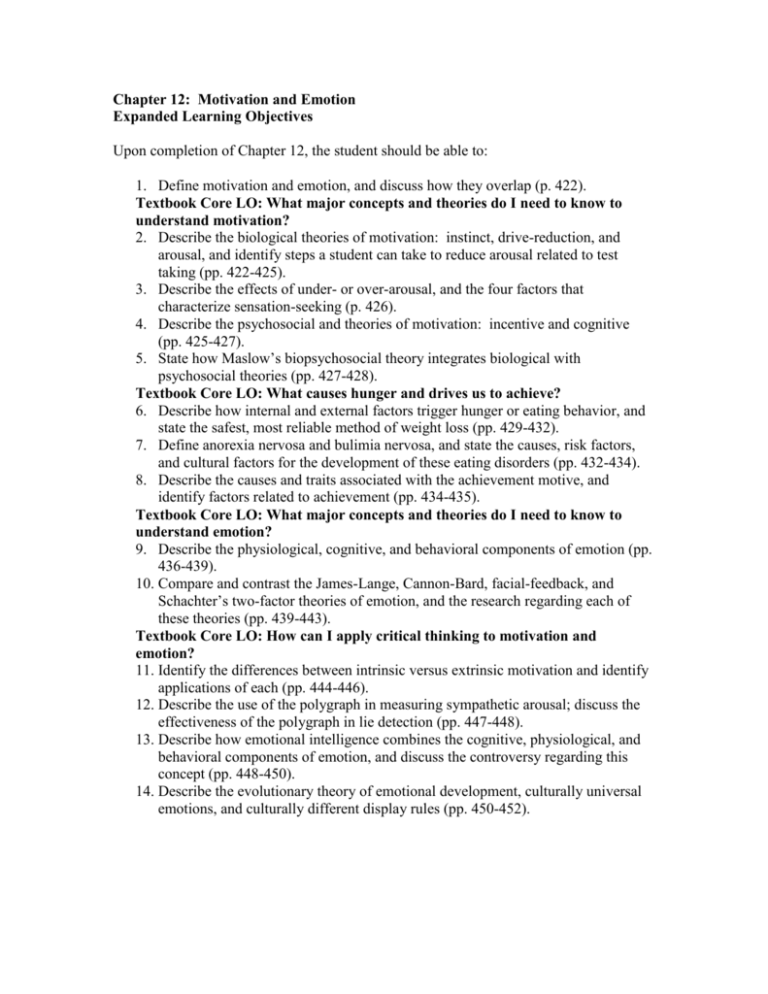
Chapter 12: Motivation and Emotion Expanded Learning Objectives Upon completion of Chapter 12, the student should be able to: 1. Define motivation and emotion, and discuss how they overlap (p. 422). Textbook Core LO: What major concepts and theories do I need to know to understand motivation? 2. Describe the biological theories of motivation: instinct, drive-reduction, and arousal, and identify steps a student can take to reduce arousal related to test taking (pp. 422-425). 3. Describe the effects of under- or over-arousal, and the four factors that characterize sensation-seeking (p. 426). 4. Describe the psychosocial and theories of motivation: incentive and cognitive (pp. 425-427). 5. State how Maslow’s biopsychosocial theory integrates biological with psychosocial theories (pp. 427-428). Textbook Core LO: What causes hunger and drives us to achieve? 6. Describe how internal and external factors trigger hunger or eating behavior, and state the safest, most reliable method of weight loss (pp. 429-432). 7. Define anorexia nervosa and bulimia nervosa, and state the causes, risk factors, and cultural factors for the development of these eating disorders (pp. 432-434). 8. Describe the causes and traits associated with the achievement motive, and identify factors related to achievement (pp. 434-435). Textbook Core LO: What major concepts and theories do I need to know to understand emotion? 9. Describe the physiological, cognitive, and behavioral components of emotion (pp. 436-439). 10. Compare and contrast the James-Lange, Cannon-Bard, facial-feedback, and Schachter’s two-factor theories of emotion, and the research regarding each of these theories (pp. 439-443). Textbook Core LO: How can I apply critical thinking to motivation and emotion? 11. Identify the differences between intrinsic versus extrinsic motivation and identify applications of each (pp. 444-446). 12. Describe the use of the polygraph in measuring sympathetic arousal; discuss the effectiveness of the polygraph in lie detection (pp. 447-448). 13. Describe how emotional intelligence combines the cognitive, physiological, and behavioral components of emotion, and discuss the controversy regarding this concept (pp. 448-450). 14. Describe the evolutionary theory of emotional development, culturally universal emotions, and culturally different display rules (pp. 450-452).
